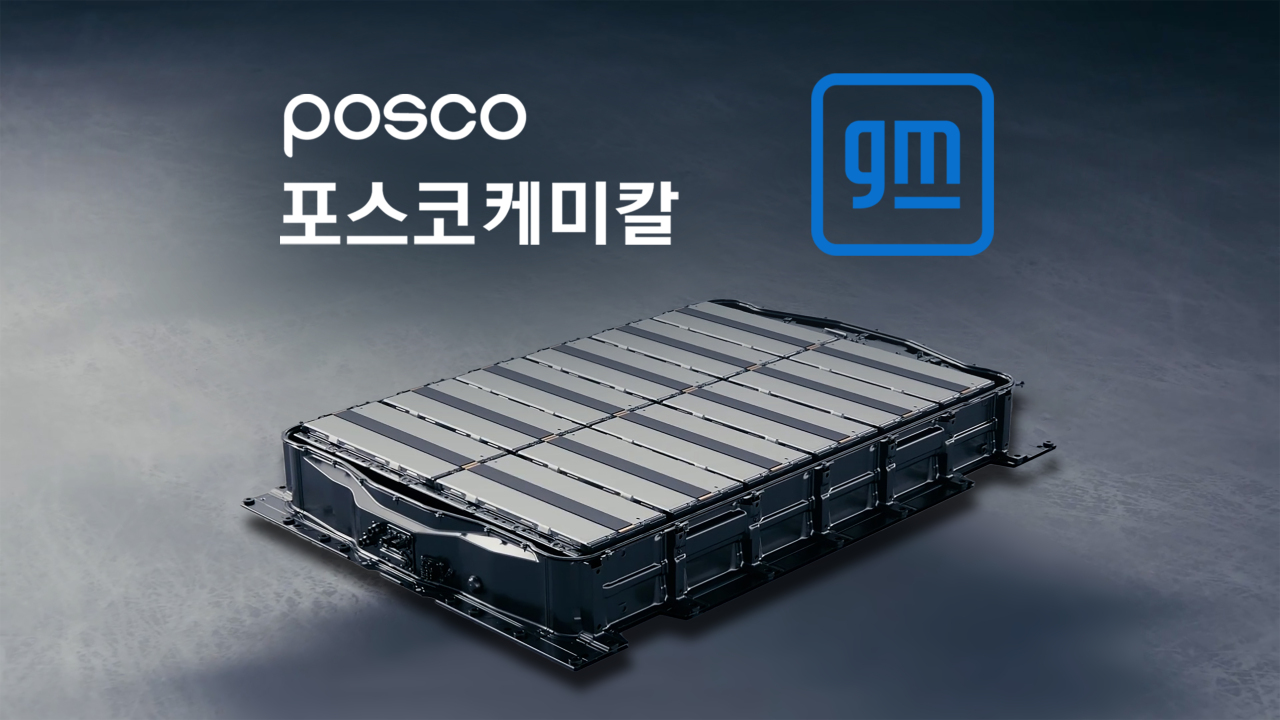 |
General Motors’ Ultium platform dedicated for electric vehicles. The platform allows GM to load batteries under the car’s floor instead of engine bay. (General Motors) |
Posco Chemical and General Motors will form a joint venture and build a factory in North America to locally produce key electric vehicle materials, the two companies announced Thursday.
Once completed in 2024, the new facility will produce and supply cathodes to Ultium Cells, a joint venture between GM and LG Energy Solution, which is building two EV factories in Ohio and Tennessee. Though size and location remain unclear, this is Posco Chemical’s first expansion to the US.
Cathodes are materials that go inside the plus sides of EV batteries. They decide how powerful EV batteries can become and represent roughly 40 percent of battery costs. Posco Chemical will supply GM with nickel-rich cathodes for high-performance EV batteries.
As two more US-based Ultium Cells facilities are planned by 2025, the new cathode plant will allow GM to vertically integrate its cathode supply chain. Posco Chemical’s business partnership with GM began in December last year when Ultium Cells chose the Korean battery materials company as its cathode supplier. Posco Chemical is currently building a 60,000-ton cathode plant on the southern coast of Korea.
Though it was only last year the two companies started doing business with each other, the joint venture was formed based on years of mutual trust built between GM and Posco, a parent company of Posco Chemical, which supplies steel plates to GM cars. Top executives from both sides agreed on the necessity of expanding their cooperation to EV batteries, according to a Posco Chemical official.
“We are building a sustainable and resilient North America-focused supply chain for EVs covering the entire ecosystem from raw materials to battery cell manufacturing and recycling,” said Doug Parks, executive vice president at GM, in a press release.
The partnership with Posco Chemical is GM’s latest move to hedge supply chain risks posed by China. The Asia’s No. 1 economy’s daunting dominance in raw materials has recently emerged as a major risk in the EV industry.
“China’s potential weaponization of key raw materials is a risk factor. (Automakers) who secure stable supply chains through vertical integration can expect a premium in the market,” Kim Hyun-soo, an analyst at Hana Financial Investment, said.
According to SNE Research, China commands 57.8 percent of the global cathode market, followed by Korea’s 20.3 percent and Japan’s 11.4 percent.
To bolster its own supply chain resilience, Posco Chemical on Thursday completed Korea’s first-ever synthetic graphite anode plant in Pohang, North Gyeongsang Province. The plant will churn out 8,000 tons of synthetic anodes per year, which is enough to power 210,000 EVs mounted with 60 kilowatt-hour battery packs. To compare, Chevrolet Bolt EV’s battery capacity is 66 kilowatt-hours.
Anodes are materials that go inside the minus sides of EV batteries. They are typically made of natural graphite and help stabilize the batteries. Synthetic graphite anodes are 10 percent less powerful and 50 percent more expensive compared to natural graphite anodes but offer a longer lifespan. The price of synthetic graphite anodes is going down rapidly as they are gradually achieving economies of scale in the industry.
By Kim Byung-wook (
kbw@heraldcorp.com)







![[Today’s K-pop] Blackpink’s Jennie, Lisa invited to Coachella as solo acts](http://res.heraldm.com/phpwas/restmb_idxmake.php?idx=644&simg=/content/image/2024/11/21/20241121050099_0.jpg)
